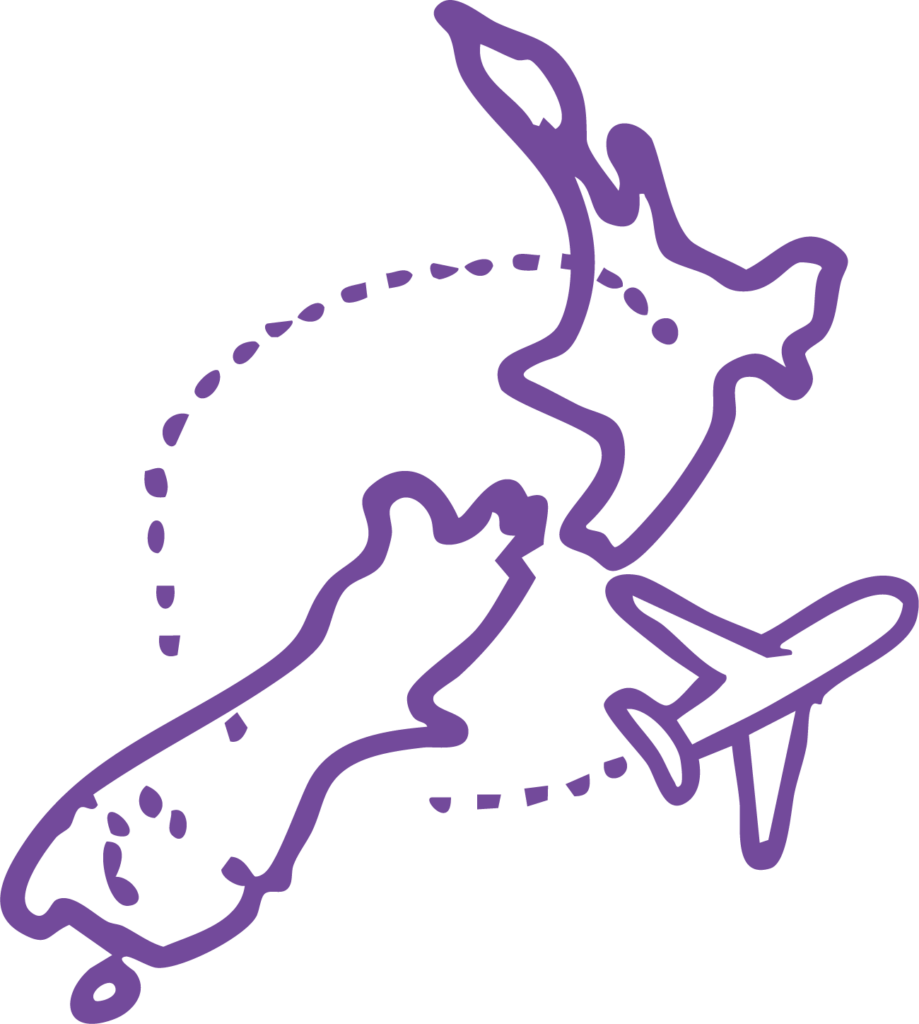
Bringing your pet to New Zealand? We’ve successfully transported hundreds of pets to NZ — let our expert team handle every detail of your pet’s move.
Bringing a pet to New Zealand takes careful planning and attention to detail. The rules are strict, the timeline is long, and some airlines won’t even let owners book flights themselves.
That’s where we come in. At Tailwind Global Pet, we’ve helped hundreds of families safely relocate their pets to New Zealand. This guide breaks down each step, from eligibility and vaccinations to quarantine and airline options, so you know what to expect.
Eligible Pets and Country Restrictions
Before planning travel for your pet to New Zealand, confirm that your pet is eligible for import. New Zealand bans certain dog and cat breeds and hybrids and has strict systems in place to avoid the spread of rabies.
Eligible Pets
New Zealand allows the import of cats and dogs from countries that meet the Ministry for Primary Industries’ (MPI) health and residency requirements. Other live animals are heavily restricted.
Chinchillas may only be imported from the United Kingdom. Rabbits and guinea pigs may only be imported from Australia. All other pets, including birds, reptiles, rodents, and ferrets, are generally not permitted.
From there, certain breeds and types of pets are banned from entry. That includes the following dog breeds and types:
- Brazilian Fila (Fila Brasileiro)
- Dogo Argentino
- Japanese Tosa
- American Pit Bull Terrier
Hybrids, or cats or dogs crossed with another species, are also banned, except for Bengal cats. Bengal cats must have documented proof of at least 5 generations of domestic ancestry. If your pet comes from a registered breeder, be sure to include the breeder’s health and lineage documentation as part of your import records.
Pets should be more than 12 weeks old and not more than 42 days pregnant before travel to New Zealand. Dogs with a history of Brucella canis, a bacterium that causes brucellosis, are not eligible for import.
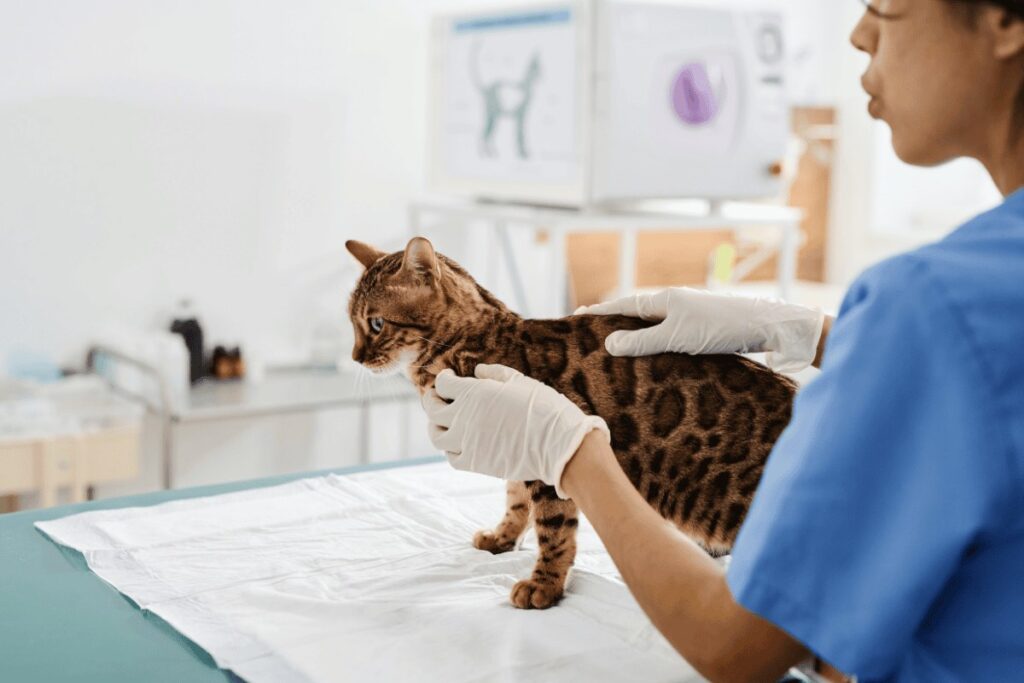
Airlines may also enforce their own breed restrictions. Air New Zealand Cargo, one of our preferred carriers, only allows brachycephalic breeds on flights that are 5 hours or less. Certified guide dogs and assistance animals may qualify for special travel arrangements, though they must still meet New Zealand’s health and import standards.
Approved Countries
Much like Australia, New Zealand groups its animal import restrictions into categories based on rabies risk. Category 1 includes Australia and Norfolk Island. Category 2 includes rabies-free countries and territories like Hawaii, Guam, and American Samoa.
Category 3 countries are considered “rabies-absent” or well-controlled for rabies. They include the United States, Canada, and the United Kingdom. Pets from these countries must meet additional import, quarantine, and post-arrival inspection requirements.
Approved countries are available in a guidance document from the MPI. Pets coming from countries that aren’t on any of the approved lists may move to an approved country for 6 months before applying for import permits.
Microchip and Vaccinations
Traveling cats or dogs should be fitted with ISO-compliant microchips before or at the same time as their initial rabies vaccinations. Carry proof of your pet’s microchip with you in case of any issues reading it upon arrival.
Microchip
All cats and dogs must have an ISO-compliant microchip that can be read upon arrival in New Zealand. Your pet’s microchip information should match across all import documents and permit applications.
Vaccinations
All pets traveling from Category 3 countries should be doing so with proof of a recent rabies vaccination. You have 2 options, depending on your pet’s vaccination history:
- For pets receiving their first rabies shots (primary rabies vaccination), the vaccine must be given between 6-12 months before travel to New Zealand.
- For pets receiving a booster rabies vaccination, that booster should be given before their previous vaccine expires and no more than 12 months before travel to New Zealand. You’ll need a complete record of your pet’s previous and current vaccines.
If there is any lapse in your pet’s rabies vaccination history, the round of vaccinations after that lapse will be considered a primary vaccination. Timing is important to consider here. Pets with primary vaccinations must wait at least 6 months to travel after receiving the vaccine.
Pets may need additional vaccines to meet quarantine requirements, but this can vary by facility. These are generally recommended vaccinations for any dog exposed to other live animals at a boarding facility or to prepare for a multi-day quarantine. They may include the following:
- Canine distemper
- Infectious canine hepatitis
- Canine parvovirus
- Canine parainfluenza
- Bordetella bronchiseptica (kennel cough)
- Canine influenza
For cats, quarantine facilities may require the following:
- Feline calicivirus
- Feline panleukopenia (enteritis)
- Feline rhinotracheitis
OVD
The Official Veterinary Declaration (OVD) certifies important information about your pet, including their microchip information, rabies vaccination history, and RNATT history and results.
Your vet can get the form started once you receive the results of your pet’s titer, but it isn’t complete until it’s signed and endorsed by an official government veterinarian. This endorsement is essential because the OVD is the official document that allows you to start the import permit process for New Zealand.
The same USDA-accredited veterinarian can also complete Model Veterinary Certificate A and Model Veterinary Certificate B, the health certificates required on the day of travel.
It is important to ensure that all information on the OVD is accurate, as errors can delay the import process. The OVD is not the same as a pet passport and should not be confused with additional identification requirements, like the Australian ID verification process.
While a pet passport provides a record of vaccinations and identity, particularly within the EU, the OVD is a specific, government-certified document required for import into New Zealand.
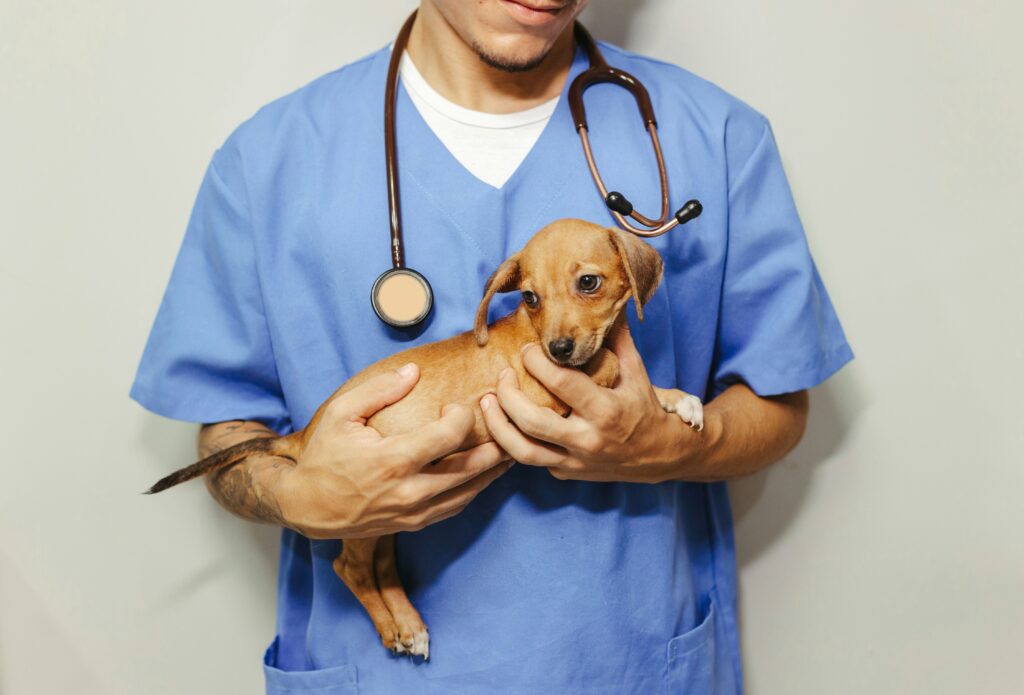
Blood Tests and Treatments
Testing and treatment requirements depend on which country category your pet is coming from when they arrive in New Zealand.
Category 1 Countries
Since rabies isn’t a concern in Australia or Norfolk Island, the process is primarily about confirming your pet’s health and parasite-free status before departure. Required treatments for cats and dogs include:
- Internal parasites (worms, tapeworms): All pets must receive one dose about 30 days before travel, and another 4 days before.
- External parasites (fleas, ticks): All pets must receive one treatment 30 days before travel, and a second 2 days before travel.
Category 2 Countries
For pets coming from Category 2 (rabies-free) countries, internal and external parasite treatments are the same as above. Additional tests and treatments are required for traveling dogs:
- Heartworm: Dogs must receive a blood test (ELISA) within 30 days before travel. Preventatives should be given 4 days before travel, unless your dog is current on a sustained-release preventive injection.
- Leptospirosis: Treat dogs with doxycycline for 14 consecutive days within 30 days before travel OR show a negative MAT test result within 30 days before travel.
- Babesia gibsoni: Dogs must test negative within 16 days before travel.
- Brucella canis: A negative test is required within 16 days before travel for dogs with a history of travel to South Africa.
Category 3 Countries
Category 3 countries are considered rabies-absent or well-controlled, but import requirements are stricter. Internal and external parasite treatments are the same as in Categories 1 and 2, and moving a dog to New Zealand requires the same tests as in Category 2.
Both cats and dogs must also complete a Rabies Neutralising Antibody Titre Test (RNATT), which checks whether your pet is adequately protected against rabies. Here are a few key things to know about the RNATT:
- Schedule the test 3-4 weeks after a primary rabies vaccination.
- The test must be done 3-24 months before travel.
- Samples must be tested by either a fluorescent antibody virus neutralization test (FAVN) or a rapid fluorescent focus inhibition test (RFFIT) at a government-approved lab.
- Passing titers are ≥0.5 IU/ml. If your pet shows less than this, they’ll need to be revaccinated with titers repeated 3-4 weeks later.
- Avoid any lapses in your pet’s vaccination history during this process.

Import Documents
Pets traveling from both Category 2 and Category 3 countries need import permits issued by the MPI. Apply for these as soon as possible after your pet’s OVD is completed and endorsed.
The MPI currently states that they need at least 30 working days for processing a full and correctly completed application. Applications submitted late in the year may experience delays of several months due to holiday periods.
For example, the cutoff for 2025 was Nov. 7, 2025. Applications after that date will not be processed until February 2026.
Permit applications are completed, submitted, and paid for online. You’ll need to upload your OVD form, RNATT lab report, rabies records, and quarantine booking confirmation letter alongside your application.
Airline Options
The airline you choose to transport your pet may have additional requirements before you even book your flight. This may include your import permit. Some airlines only accept pets booked through a professional pet shipper to make sure your pet meets every requirement for travel.
Pets flying on Air New Zealand from Los Angeles enjoy the shortest flight times, but the airline won’t accept direct bookings from the public for international pet travel. You’ll need to work with an approved pet shipper to book pet travel with Air NZ.
While less preferred, due to longer flight times and seasonal temperature embargoes, Qantas flies direct from JFK to New Zealand. Pets fly as cargo, a safe and efficient option, in crates approved by the International Air Transport Association (IATA).
We’ve also worked with Qantas Freight to get brachycephalic breeds to their destination country. Qantas Freight requires that you work with a pet travel specialist if you’re traveling with a pet type like a snub-nosed breed that needs special accommodations.
That’s not a bad thing. Working with a member of the International Pet and Animal Transportation Association (IPATA) (like us!) ensures your pet’s move meets the highest standards of animal welfare.
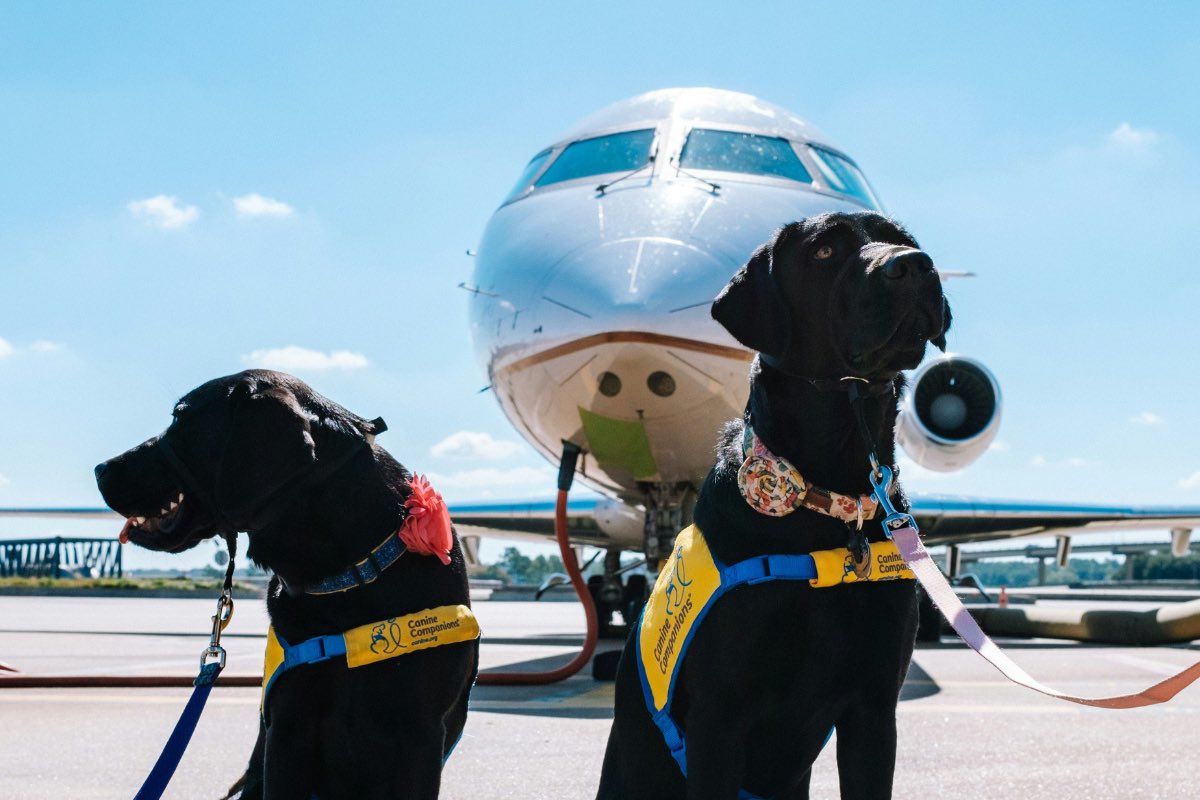
Planning an international flight for your pet? We can help.
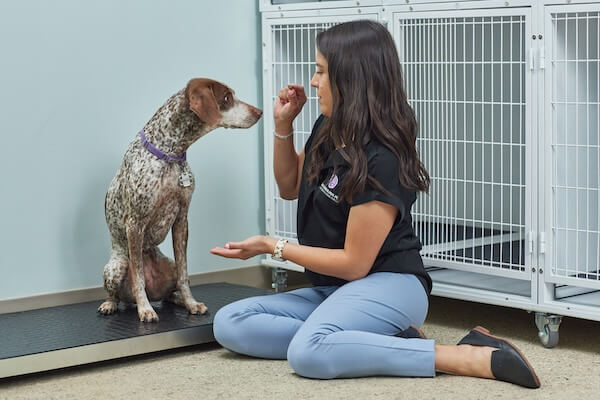
Quarantine
Category 2 and 3 pets must spend a minimum of 10 days in an MPI-approved quarantine facility once they enter New Zealand. The stay may be extended if the pet’s release inspection falls outside normal business hours or if health requirements aren’t fully met on arrival.
These privately-run facilities are located in Auckland and Christchurch. International cargo flights carrying pets usually arrive via one of those airports. If you’re traveling on to destinations like Wellington, you’ll need to find additional transport from your quarantine facility.
New Zealand pet quarantine facilities are safe and spacious, with private sleeping areas and exercise spaces. Your pet is inspected by a vet from the MPI at the start and the end of their stay. If they’re sick or found to have external parasites, that could extend their stay.
Start the booking as early as your flight schedule is confirmed. Space can be limited, and the booking must be included as a required document in your import permit application.
How Tailwind Can Help
Whether you need pet travel consultants due to airline policies or feel overwhelmed by the logistics of moving to New Zealand with pets, our experts at Tailwind are here to help.
As the best pet transport company for pets traveling to New Zealand, we can make sure that your pet is set with everything they need for a safe trip every step of the way. We’re here for you 24/7 from the start of your planning process to your pet’s first day in their new home.

Ready to get started? Each pet relocation situation is different, so to get an idea of the costs involved, fill out a quote request.
See What Our Clients Have to Say

“I recently used Tailwind Global Pet to relocate my pets from the United States to New Zealand, and I cannot recommend them highly enough. From the very beginning, Brady and Cara made the entire process smooth and stress-free — even after I had already relocated to New Zealand ahead of my pets.
They were incredibly responsive, quick to answer all of my questions, and always kind and reassuring. Moving pets internationally can be overwhelming, but Tailwind handled everything with professionalism and care, giving me complete peace of mind throughout the process.
Thanks to Brady, Cara, and the entire Tailwind team, my pets arrived safely and are now happy and healthy in New Zealand and just waiting until their 10 day quarantine is over. I truly don’t think I could have done it without them. If you’re considering moving pets abroad, I wholeheartedly recommend their services.”
– Dylan C.

“Brady, Alex and Cara have been efficient, reassuring and prompt during the difficult times of transition. Our cat, Excalibur, traveled a couple of says ahead of us to New Zealand. I managed the paperwork with our local Vet with guidance from Brady and Cara. From LA onwards, they managed everything. The facility in LA was clean and well staffed. Everyone was so friendly, I felt good leaving my cat in their care. Cara was my main point of contact and her response time was a few minutes only, she’s a keeper Brady!! We will pick up our kitty in 2 days after completing her required quarantine. Here she is a couple of days ago. Thank you Brady, Cara and Alex!!!”
– Me Here

“We recently sent our dachshund, Archie, to New Zealand with Tailwind Global Pet, and the experience was outstanding from start to finish. Brady and Cara were incredibly diligent, detail-oriented, and went above and beyond at every step. Whether we had late-night questions or needed help over the weekend, they were always there and made the entire process stress-free for us.
They truly know what they’re doing and made it as easy as possible for Archie, ensuring his comfort throughout the journey. The kennel club facility near LAX was also welcoming and comforting for Archie, which gave us so much peace of mind.
We can’t thank Brady, Cara, and the Tailwind Global Pet team enough. If you’re looking for a professional, caring, and reliable company to handle your pet’s travel, we highly recommend them!”
–Troy F.
